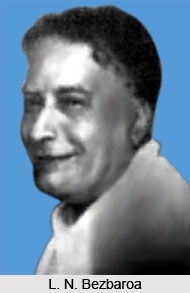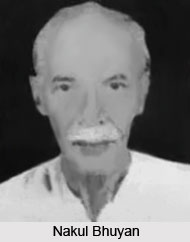 Western influence on Assamese short story has introduced techniques like use of satire and irony in short stories. The history of the modern Assamese short story is divided into three periods: the pre-Awahon era (before 1929); the Awahon era that lasted up to the last war and the post-war era. Assamese modern short story was born under the patronage of Jonaki is an offshoot of Western literary impact. Certain traces of folk-tradition lingered on in the works of pioneers like L. N. Bezbaroa. It was in 1912 that Bezbaroa`s collection of short stories, Suravi was published. His stories had a traditional outlook. In his stories life is depicted naturally. Some of his stories were depicted satirically.
Western influence on Assamese short story has introduced techniques like use of satire and irony in short stories. The history of the modern Assamese short story is divided into three periods: the pre-Awahon era (before 1929); the Awahon era that lasted up to the last war and the post-war era. Assamese modern short story was born under the patronage of Jonaki is an offshoot of Western literary impact. Certain traces of folk-tradition lingered on in the works of pioneers like L. N. Bezbaroa. It was in 1912 that Bezbaroa`s collection of short stories, Suravi was published. His stories had a traditional outlook. In his stories life is depicted naturally. Some of his stories were depicted satirically.
His stories like Bhempuria maujadar, Dhowakhowa, Dhar-madhvaj Phoislanavis, Mangaluchandra, Molak guin gain are examples of satires. Goswami`s stories show a drift in technique. He had emphasized on character-study and plot-structure. His themes had a broad-based understanding of human strength and weakness.
 One of his stories Yatri is the story of a man who is stirred to the depths by the charms of Santi. The story Raktabij depicts how Indian villages are torn by internal strife. Sonnyasini depicts illegal sexual attachment. His stories are simple and have a romantic understanding. His stories like Brahmaputrar bukut, Devadarshan, suffer from certain technical blemishes.
One of his stories Yatri is the story of a man who is stirred to the depths by the charms of Santi. The story Raktabij depicts how Indian villages are torn by internal strife. Sonnyasini depicts illegal sexual attachment. His stories are simple and have a romantic understanding. His stories like Brahmaputrar bukut, Devadarshan, suffer from certain technical blemishes.
Other short story writers of the pre-Awahon era also include Nakul Bhuyan, Dr. S. K. Bhuyan, Mitradev Mahanta and Dandi Kalita. Nakui Bhuyan`s collections are Chorang chowar chora (1918), Jonowali (1933) and Galpar sarai. (1962).Other collections include Panchami by Dr. S. K. Bhuyan, Chandrahar (1924) by Mitradev Mahanta and Satsari (1925) by Dandi Kalita. Bhuyan is known for balanced style and moderate appraisal of human emotions. However, the technique of the short story did not make much progress beyond the standards created by Bezbaroa and Goswami. Mala (1918) shows L. N. Phukan`s slip in technique, Ophaidang (1952) and Maramar Madhuri (1963) show his art and power of expression at its best. Phukan`s Typistar jivan portrays life`s agony.
Phukan`s Alahimamayi portrays an extravagant woman whose husband is the head clerk of a tea-estate. This story evokes pity and laughter. In Phukan`s stories there is a conflict of impulses due to which irony is also developed. His stories like Typistar jivan, Adinar chinaki, Bihu sanmilan, Mahimamayi, Private Secretary represent typically social characters.



















